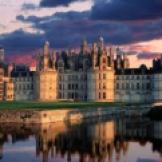Chateaux de la Loire, a must !
- Andrea Biasca-Caroni
- May 30, 2015
- 3 min read
Updated: Nov 10, 2023
Heritage to discover, 21 châteaux to visit! Prepare your stay by finding out about each château, one by one, and by accessing directly the pages dedicated to each château.
Nos châteaux en Chambre d’hôtes
A la recherche d’un lieu pour vos prochaines vacances rimant avec convivialité et art de vivre ?
Un accueil chaleureux pour un séjour convivial à partager
Retrouvez notre sélection des plus belles chambres d’hôtes situées dans plusieurs régions de France. Ces logements labélisés Bienvenue au Château vous permettent de profiter d’un cadre unique riche d’histoire tout en profitant de l’hospitalité des personnes qui y habitent. Elles partageront avec vous les secrets les mieux gardés de leur demeure tout en veillant à l’exclusivité de votre séjour. Elles pourront vous conseiller pour vos activités en extérieur, visites incontournables des alentours et spécialités régionales. Profitez d’un instant hors du temps partagé avec des hôtes passionnés lors de moments conviviaux.
Châteaux of the Loire Valley
Châteaux of the Loire Valley

Château de MontsoreauLocationFrance (Centre, Pays de la Loire)BuiltRenaissance periodArchitectural style(s)French Renaissance architecture
UNESCO World Heritage SiteTypeCulturalDesignated2000Part ofThe Loire Valley between Sully-sur-Loire and ChalonnesReference no.933CountryFranceRegionEurope and North America
The châteaux of the Loire Valley (French: châteaux de la Loire) are part of the architectural heritage of the historic towns of Amboise, Angers, Blois, Chinon, Montsoreau, Orléans, Saumur, and Tours along the river Loire in France. They illustrate Renaissance ideals of design in France.[1]
The châteaux of the Loire Valley number over three hundred,[2] ranging from practical fortified castles from the 10th century to splendid residences built half a millennium later. When the French kings began constructing their huge châteaux in the Loire Valley, the nobility, drawn to the seat of power, followed suit, attracting the finest architects and landscape designers. The châteaux and their surrounding gardens are cultural monuments which embody the ideals of the Renaissance and Enlightenment. Many of the châteaux were built on hilltops, such as the Château d’Amboise, while the only one built in the riverbed is the Château de Montsoreau. Many had exquisite churches on the grounds or within the château.
History
As the wars of the 15th century wound down, King Charles VII, King Louis XI, and their successors preferred to spend the bulk of their time in the “garden of France” along the banks of the Loire. In the late 15th century, Tours, then Blois, and later Amboise became the preferred locations of the French royal court. Many courtiers bought dilapidated castles built by the medieval Counts of Blois and of Anjou, and they had them reconstructed in the latest Italianate fashion. Leonardo da Vinci and other Italian artists arrived to design and beautify these residences.
By the middle of the 16th century, King François I had shifted his throne from the Loire back to the ancient capital of Paris. With him went the great architects, but the Loire Valley continued to be the place where most of the French royalty preferred to spend the bulk of their time. King Louis XIV, in the middle of the 17th century, made the Paris area the permanent locale for great royal residences when he built the Palace of Versailles. Nonetheless, those who gained the king’s favour and the wealthy bourgeoisie continued to renovate existing châteaux or build lavish new ones in the Loire as summer residences.
The French Revolution saw a number of the great châteaux destroyed and many ransacked, their treasures stolen. The overnight impoverishment of many French noble families, usually after one of their members lost his or her head to the guillotine, saw many châteaux demolished. During World War I and World War II, various chateaux were commandeered as military headquarters. Some of these continued to be so used after the end of World War II.
Today, the remaining privately owned châteaux serve as homes and some of them open their doors to tourists, while others operate as hotels or bed-and-breakfasts. Many others have been taken over by local governments, and the grandest, like those at Chambord, are owned and operated by the national government and are major tourist sites, attracting hundreds of thousands of visitors each year.












